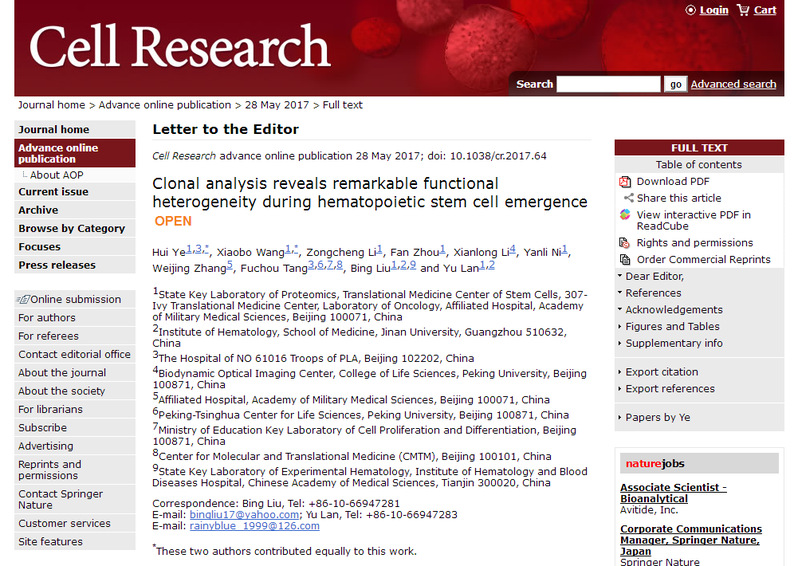- ABOUT JNU
- ADMISSION
-
ACADEMICS
- Schools and Colleges
-
Departments and Programs
- Arts College of
- Chinese Language and Culture College of
- Economics College of
- Electrical and Information Engineering College of
- Foreign Studies College of
- Information Science and Technology College of
- Environment School of
- Humanities School of
- International Business School
- International Studies School of
- Journalism and Communication College of
- Law School
- Liberal Arts College of
- Life Science and Technology College of
- Management School of
- Marxism School of
- Medicine School of
- Pharmacy College of
- Physical Education School of
- Science and Engineering College of
- Shenzhen Tourism College
- Research Institute
- Research Center
- Programs in English
- Majors
- Study Abroad
- Online Learning
- RESEARCH
- CAMPUS LIFE
- JOIN US
JNU Research Team Publishes Paper in Cell Research
Time: May 2, 2017;
Source: School of Basic Medical Sciences;
Publisher: The News Center
A team led by Lan Yu, a researcher from the Institute of Hematology affiliated with JNU’s School of Basic Medical Sciences, and Liu Bing, a chair professor in the school’s pathophysiology department and a researcher from the Affiliated Hospital of the Academy of Military Medical Sciences, published a paper titled "Clonal analysis reveals remarkable functional heterogeneity during hematopoietic stem cell emergence" in Cell Research on April 28.
This paper, with Lan and Liu as its corresponding authors, represents great progress in research on hematopoietic stem cells. The study is supported by the National Key Research and Development Program of the Ministry of Technology and Science, and the Committee of the National Nature Science Foundation.

The study reports heterogeneity in pre-HSC/HSC composition in E11 mouse embryos, indicating that functional heterogeneity in HSCs exists from the very beginning of embryonic HSC emergence and persists throughout the lifespan. It also reveals at least two major HSC subtypes closely associated with the walls of large arteries in the course of HSC emergence before colonization from mature HSCs to fetal liver. The mechanism short of α-HSCs deserves further investigations, for it might relate to the influence of microenvironment. In addition, the team is searching for alternative surface markers that can be used to isolate certain subtypes of pre-HSCs and HSCs in various hemogenic and hematopoietic niches.
NEWS
- About the University
- Quick Links
Copyright © 2016 Jinan University. All Rights Reserved.




